When Nick and I started dating, Nick asked me about raising cattle, and I said why not? A year later when the opportunity to buy cattle came up, we jumped on it. We are farmers who were raised by farmers, and the idea of cultivating something bigger than us runs in our blood. In early June 2017, we purchased seven head of Saler cattle to market for beef and went for it.
One incredible aspect of the Yakima Valley is that when you need a hand, people will flock to you with help. Within a week, three families found us and offered that hand– from equipment to hard earned experience. Sue Stone from Skookum Cattle taught us how to vaccinate and castrate our new bulls to ensure good health until they went to slaughter. John and Lynn Ashbaugh walked us through current market trends and basic cattle enterprise finances countless times. Pete Faxon explained to us the importance of choosing the right feed and vaccines – and whiskey.
Throughout the summer grazing period we started to market our steers to family, co-workers, new friends, and even auctioned off a full steer at the St. Joseph Marquette’s Salmon Feed. Thanks to Stephanie Ketchum, her team, and the Yakima Valley community we were able to raise $5,000 for the school.
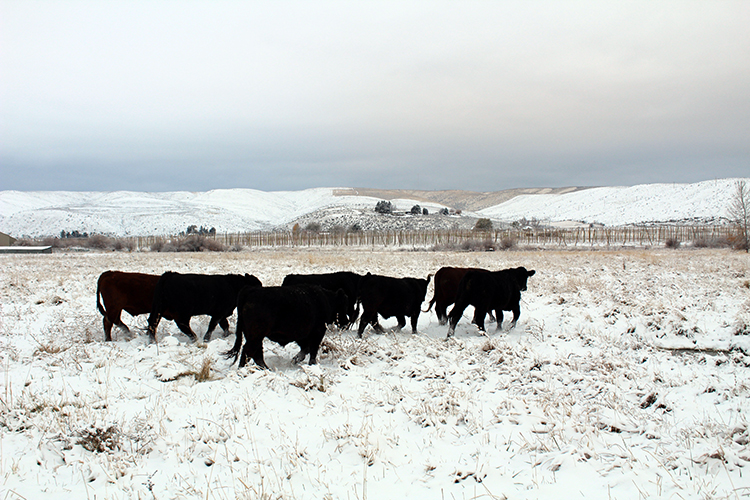
We ended up sharing the pasture with our steers with a neighbor, so we put up an electric fence to keep them separated when we started to feed our steers out for butcher. Over the summer we perfected the skill of splitting cattle on 30 acres of land within the few hours between leaving work and dark every time they tore the fence down. Cows are very determined animals and will find the smallest hole to get through a fence. We learned how important it is to make your butcher and slaughter appointments months in advance, and were fortunate to get a slaughter and butcher date locked in with Countryside Farm Slaughtering and Ahtanum Custom Meats.
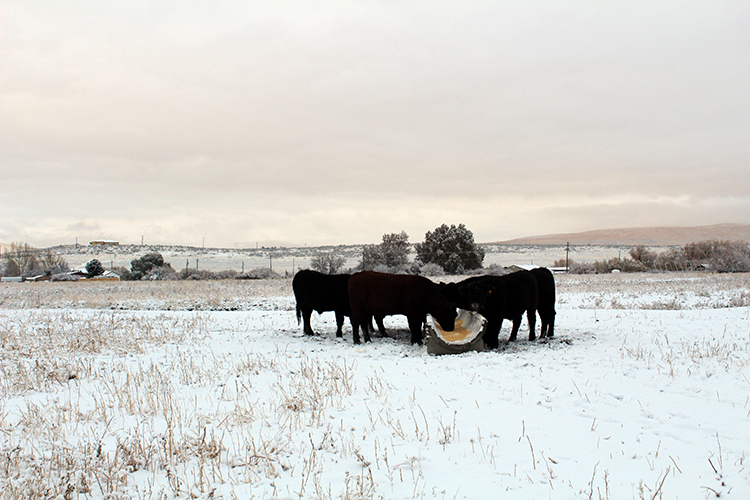 During the last 60 days up to the slaughter date we started gradually feeding our steers cracked corn to improve the flavor and quality of the meat. This meant driving out to the pasture in the Wenas every morning before work to feed, usually before sunrise. It was quite a show most mornings while we chased around cattle in our rain boots trying to make sure they all got equal portions of corn. Countless days driving from Moxee to the Wenas, driving to work, driving back out to check on what became known as “the kids.” We were counting down the days till slaughter, but when the cold November morning came, Nick asked me how long until we buy more.
During the last 60 days up to the slaughter date we started gradually feeding our steers cracked corn to improve the flavor and quality of the meat. This meant driving out to the pasture in the Wenas every morning before work to feed, usually before sunrise. It was quite a show most mornings while we chased around cattle in our rain boots trying to make sure they all got equal portions of corn. Countless days driving from Moxee to the Wenas, driving to work, driving back out to check on what became known as “the kids.” We were counting down the days till slaughter, but when the cold November morning came, Nick asked me how long until we buy more.
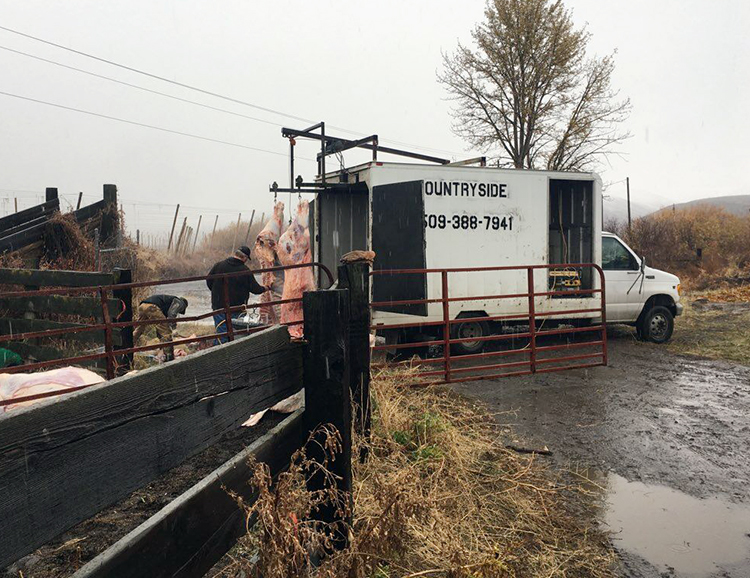
Slaughter day was long and wet. We were out there before sunrise and didn’t finish until dark. Kirk Poeggel and his son from Countryside Farm Slaughtering were the true workers– dropping, skinning, and dressing each steer. Nick and I spent the day watching and ringing our hats from all the rain. Kirk had a smooth system, we rounded three steers up at a time to be killed. Then as his son was skinning the carcasses, Kirk would gut, hang, and split the steers in half to go into his truck.Nick and I kept track of where the steers ended up in the truck and marked each half so we knew who was getting the meat. Once all the slaughtering was done, it was time to clean up. We tossed the guts and hides out in the pasture for the coyotes – soon realizing we should’ve saved the hides for some cool projects. Then we loaded up and headed out to Ahtanum Custom Meats, it was the home stretch. Nick, Kirk, and his son hung the halves on the rail system in the unloading area while I recorded weights and tagged each half with the new owner’s name. After the long day was over all we could think about was a cold beer and a burger – ironically.
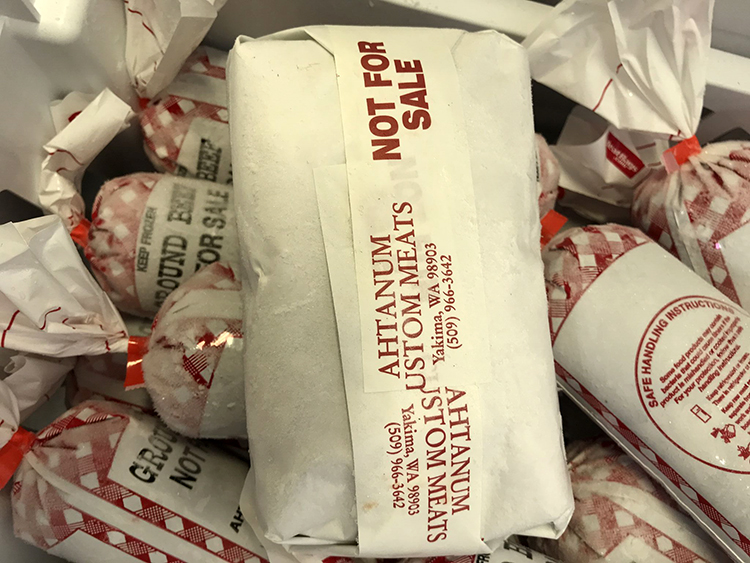 We started this venture just thinking we would buy a few calves, put them out to pasture for the summer, then take them to the livestock auction in the fall to learn a little bit about the cattle industry. When the first customer asked if we were selling beef and our business structure changed, we learned so much more than we ever expected. We grew up with limited cattle experience, but the cattle industry opened up to us and helped us all the way through. Not only did people lend us equipment and tools, but they also invited us to attend meetings and dinners, and to sit at their kitchen table and learn about their experiences because they wanted to see us succeed. Our customers and friends keep asking “are you going to do it again next year?” and our response is yes, we don’t plan to stop growing.
We started this venture just thinking we would buy a few calves, put them out to pasture for the summer, then take them to the livestock auction in the fall to learn a little bit about the cattle industry. When the first customer asked if we were selling beef and our business structure changed, we learned so much more than we ever expected. We grew up with limited cattle experience, but the cattle industry opened up to us and helped us all the way through. Not only did people lend us equipment and tools, but they also invited us to attend meetings and dinners, and to sit at their kitchen table and learn about their experiences because they wanted to see us succeed. Our customers and friends keep asking “are you going to do it again next year?” and our response is yes, we don’t plan to stop growing.
Thank you, Allie and Nick of Perrault Cattle Company!
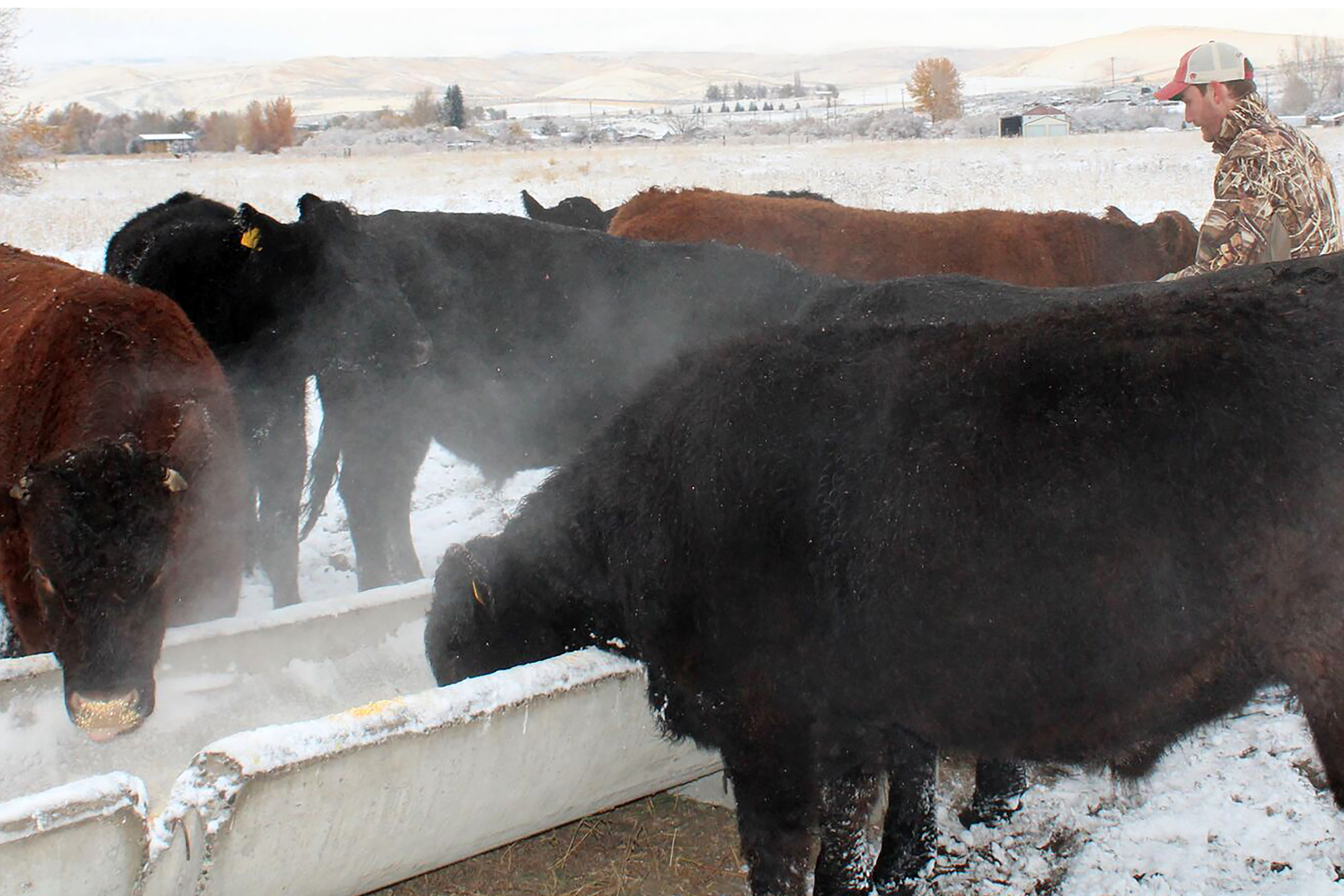





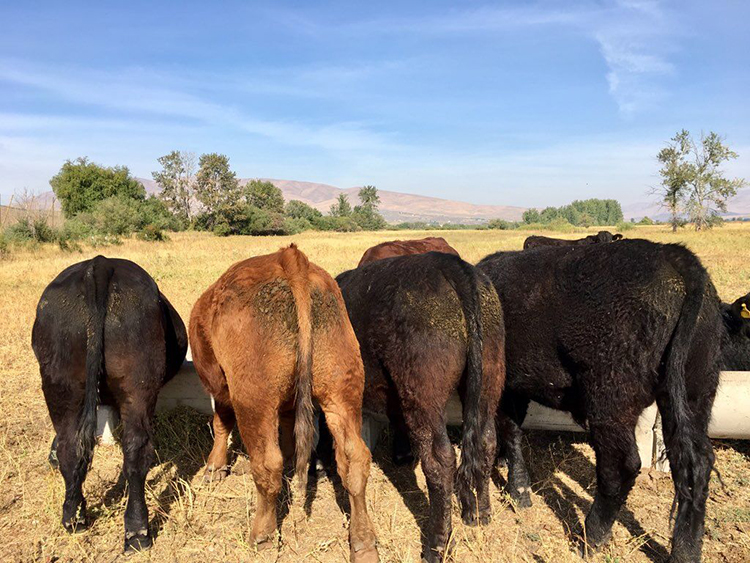
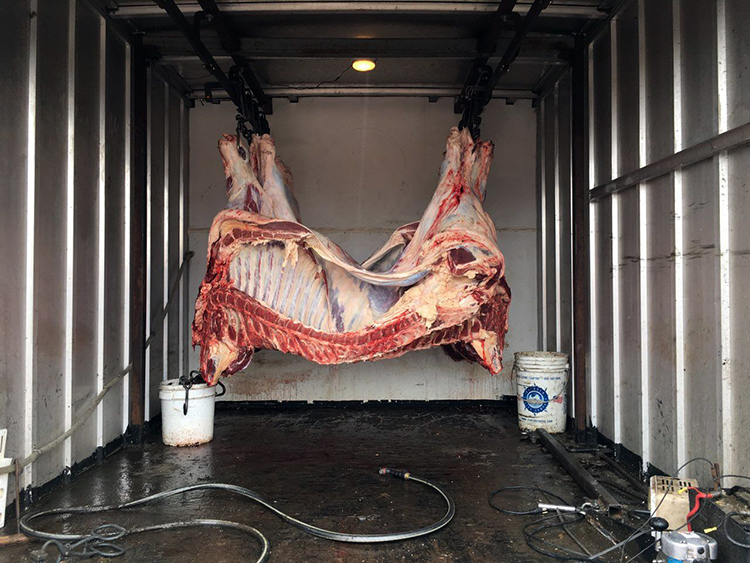
This is exciting to here what you’ve been up to! A little unexpectedly gruesome (I wasn’t sure what I was getting myself into I just clicked a link that your mom reposted on FB) but still inspiring. Hope you’re doing well!
Thanks for sharing your experience! Mike and I are thoroughly enjoying your beef. We are in the process of learning how to cook all of the different cuts- lots of tasty meals. We look forward to purchasing more from you in the future!